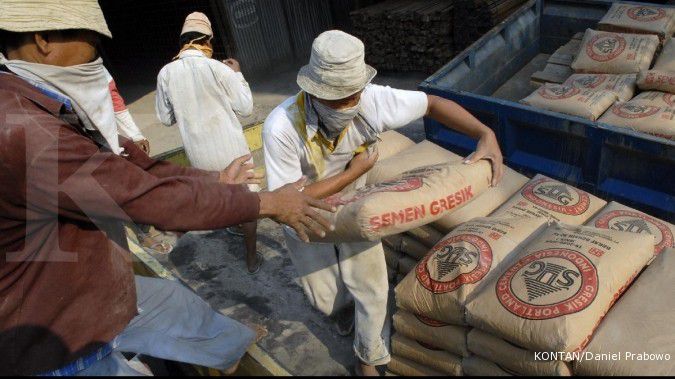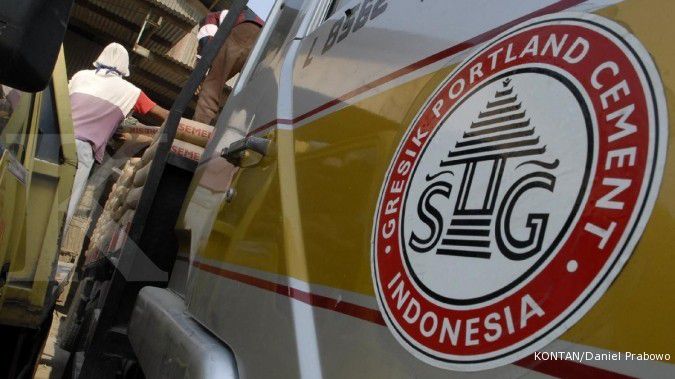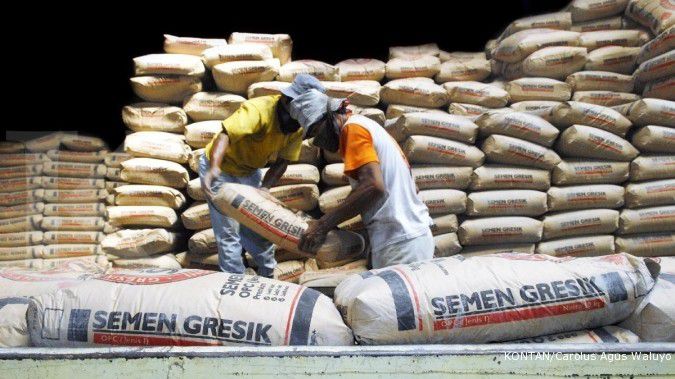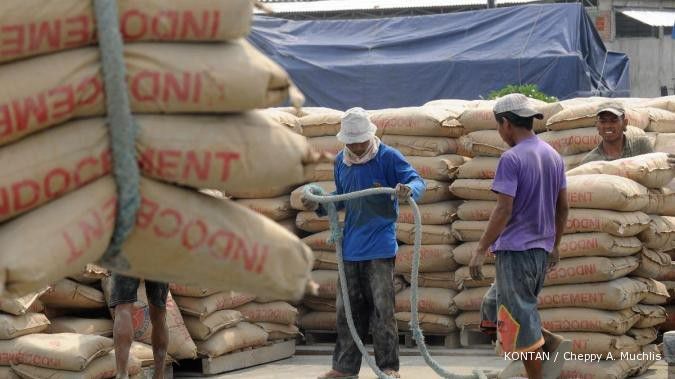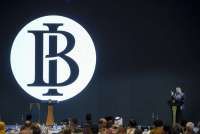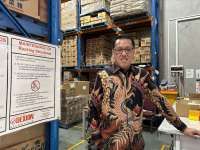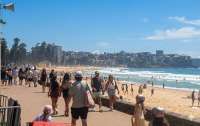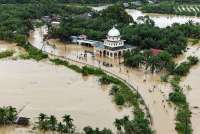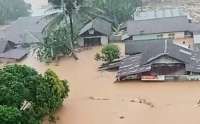JAKARTA. Publicly listed cement producer Holcim Indonesia plans to increase cement prices this year to cope with surging costs due to the government’s policy to increase electricity prices, which began on May 1, the company’s top executive has said.
Holcim president director Eamon Ginley said in Jakarta Tuesday that the cement-price increase was inevitable as the surge in the electricity prices would cause a significant increase in the company’s operating costs.
According to him, the electricity rate hike would increase the company’s total operating costs by up to 5 percent. However, he did not elaborate on when or by how much the company would increase its product prices.
As of May 1, the government raised electricity prices by either 38.9 percent or 64.7 percent, depending on businesses’ power consumption. The increases, however, will be phased in gradually every two months until the end of the year.
“The price of [electricity] will progressively increase between May and July. This will have a cost implication throughout the year of between 3 and 5 percent,” Ginley said. The increase will be fairly significant for Holcim, as it is among the industries that will have to pay the upper rate of 64.7 percent for its electricity.
Holcim’s cost of revenue stood at Rp 3.5 trillion (US$304.5 million) for the first quarter of the year, a 14.5 percent increase compared to the same period last year. Its general administration expenses rose by 8.09 percent year-on-year (yoy) to Rp 415.57 billion during the year.
Holcim recorded a 9.11 percent increase in revenue to Rp 2.36 trillion during the first three months of 2014, compared to Rp 2.16 trillion during the same period last year.
Kent Carson, the company’s chief financial officer, said that some price increases, cost control and a higher volume of ready-mix sales had helped Holcim book greater net income.
“As the foreign exchange (forex) rate bounced back, it also helped improve the [financial] results,” Carson added.
Holcim’s net income plunged by 29.5 percent to Rp 952 billion last year from the Rp 1.35 trillion it earned in 2012, impacted by market oversupply and the rupiah depreciation against the US dollar.
Despite the rise in the electricity rate, Ginley said his company was optimistic it would secure a higher annual revenue compared to last year’s figure, assisted by boosted capacity from its Tuban facilities.
The company disbursed $800 million to construct Tuban 1 and Tuban 2, both in East Java. Each of the two factories can produce up to 1.7 million tons of cement per year. Tuban 1 began operating in October 2013, while Tuban 2 is due to commence operations in the first quarter of 2015.
Apart from the Tuban facilities, the company and its subsidiaries have a total annual production capacity of 8.2 million tons of cement in Indonesia and another 1.2 million tons in Malaysia.
Meanwhile, state-run cement producer Semen Indonesia aims to start construction on its Rembang plant in June. A written statement published by the company on Tuesday said that the plant would have the capacity to produce 3 million tons of cement annually, and would launch operations in 2016.
The total investment for the plant stands at Rp 3.72 trillion.
Semen Indonesia president director Dwi Soetjipto said the new plant was expected to help the company boost its total cement production to 39.3 million tons by 2016, and to 40.8 million tons by 2017.
Currently, Semen Indonesia produces 31.8 million tons per year.
The statement also said that the firm had sold 6.2 million tons of cement in the first quarter of this year, up by around 3.5 percent compared to 5.9 million tons sold during the same period last year.
Cement price hike inevitable: Holcim
May 07, 2014, 02.05 PM
/2011/10/10/27425965p.jpg)
ILUSTRASI. PT Ciputra Development Tbk (CTRA) menyebut prospek bisnis penjualan ruko memang masih menjanjikan. Foto: KONTAN/Namira Daufina Nainggolan
Reporter: Asnil Bambani Amri
| Editor: Asnil Amri
Latest News
-
December 01, 2025, 10.50 AM
Bank Indonesia Will Bring Rupiah to Trade at 16,500 per Dollar Next Year
-
November 30, 2025, 04.35 AM
Antonius Auwyang: Building a Golden Bridge for Indonesian Products in Australia
-
November 29, 2025, 10.11 AM
Main Character in Sydney! From Cozy Coffee at The Rocks to Chill Vibes in Manly
-
November 28, 2025, 01.53 PM
Rescuers Step Up Recovery Operations as Southeast Asia Flood Deaths Cross 160
-
November 28, 2025, 09.30 AM
Asian Shares End Tough November on Firmer Ground Helped by Fed Cut Bets
-
November 27, 2025, 01.58 PM
GLOBAL MARKET-Stocks Gain on Fed Easing Hopes, Yen Locked in Intervention Zone
-
November 27, 2025, 12.12 PM
Indonesia Races to Evacuate Stranded Residents as Flood Death Toll Hits 28
-
November 26, 2025, 12.17 PM
EMERGING MARKETS-Asian Stocks Gain as Fed Rate-Cut Bets Firm
-
November 26, 2025, 05.46 AM
GLOBAL MARKETS-Stocks Advance, US Yields Retreat on Heightened Fed Cut Expectations
